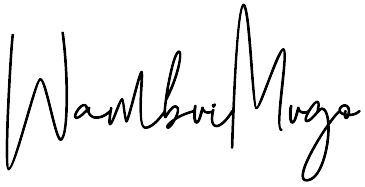7 Pricing Strategies to Make Your Rates Irresistible

Let’s be real for a minute: How many times have you set a price for your work, only to wonder later if you could have charged more or less?
Maybe you’ve even caught yourself saying, “I should’ve asked for more.” If that sounds familiar, you’re not alone. When starting as a freelancer, you’re often clueless about the worth of your work. This makes you so insecure that you undercharge and take any job that comes your way. You fear that people won’t buy if the price is higher so you charge too little. In the long run, you struggle to make ends meet and don’t get to support the lifestyle you want.
All it takes is pricing your work right.
Whether you are a beginner or pro, this guide will give you the pricing techniques to help you be confident when stating your fee. You’ll be able to charge what you’re worth without scaring clients away.
Common Pricing Models
How clients pay you can be just as important as how much they pay. Different pricing models can make a big impact on whether they choose to hire you for their projects. Here are some common options to consider for your freelance business:
- Hourly Rates: You charge for each hour you work.
- Project-Based Pricing: You set a fixed price for the entire project.
- Retainer Fees: Clients pay you a set amount regularly to keep you on standby for ongoing work.
- Recurring Subscription: Clients pay a regular fee for continuous access to your services.
- Value-Based Pricing: You price based on the value or results your work provides to the client.
You might use one model or mix a few, depending on the range of services you offer and what suits your business best. Experimenting with these options will help you find the best fit for your freelance work and client needs.
Factors to Consider When Pricing Your Freelance Services
- Industry Standards: Look at what others in your field are charging to understand the going rates. This gives you a baseline to work from, but your rates should reflect your unique skills and experience.
- Client’s Budget and Market Fit: Align your rates with the budget and expectations of your target clients. For example, startups may have smaller budgets than larger corporations, so adjust accordingly. Knowing what your ideal clients are willing to pay will ensure your rates are realistic and competitive.
- Living and Business Expenses: Factor in your monthly living costs, taxes, and business expenses like software subscriptions or marketing. This ensures that your rates cover your needs, help you meet your financial goals, and ensure your freelance work is sustainable.
- Value of Your Work: Consider how your work impacts your client’s business. If your services help them generate significant revenue or save money, you can charge more. This is known as value-based pricing.
- Pricing Model: Decide whether to charge hourly, per project, or based on milestones. Each model has its pros and cons.
- Account for Your Experience and Skills: If you have specialized skills or work in a high-demand niche, you can justify higher rates. Experience and niche expertise are valuable and should be reflected in your pricing.
- Time and Effort: Be realistic about how long tasks take, including all associated work like research, communication, and revisions, and factor this into your pricing. Make sure your rates compensate for all the time spent on a project, not just the direct hours worked.
Top Pricing Techniques

1. Know Your Worth
First things first, you need to know what you’re worth. This isn’t about pulling a number out of thin air—it’s about understanding the value you bring to the table.
Think about your skills, experience, and the results you deliver.
Have you helped clients double their sales?
Do your designs always leave clients coming back for more?
Whatever it is, recognize it and price accordingly.
Actionable Tip: Do some digging to see what other freelancers in your field are charging. For example, if you’re a graphic designer with five years of experience, check out rates on platforms like Upwork or Fiverr. But don’t just stop there—think about what makes you unique. Maybe you specialize in eco-friendly branding or have a knack for minimalist designs. That expertise is valuable, and your pricing should reflect it.
2. Packages Your Services
People love a good deal, and you can offer that by bundling your services into packages. Instead of charging by the hour, create packages that provide more value to your clients. If you’re a content writer, offer a “Starter Blog Package” that includes three blog posts, social media snippets, and one round of revisions.
Pricing these services together often makes them more appealing than selling them individually. Plus, it simplifies things for your clients, making it easier for them to choose you.
3. Use Anchor Pricing
This is one of my favorite techniques because it’s all about psychology.

Anchor pricing involves showing clients a high-priced option first, making the other options seem more affordable by comparison. For example, if you’re a video editor, you might offer three options:
- Basic Package: $50 for a 2-minute video.
- Standard Package: $100 for a 5-minute video with basic motion graphics.
- Premium Package: $250 for a 10-minute video with advanced graphics and a custom soundtrack.
Even if most clients choose the Standard Package, the high-priced option makes it look like a great deal.
Actionable Tip: When presenting your services, always include a premium option that’s higher than your target price. This sets the anchor and makes your middle-tier options more appealing.
4. Show the ROI
Clients love to see how your work translates into results. So, why not show them the return on investment (ROI) they can expect from hiring you?
This isn’t about promising the moon but rather showing how your services can solve their problems and lead to measurable outcomes.
Actionable Tip: Use case studies or testimonials that showcase the impact of your work. For example, you can ask a client to post a testimonial on your board “After implementing SEO strategy, by XYZ, we saw a 30% increase in organic traffic within three months.”
This not only justifies your rates but also builds trust.
5. Play with Pricing Psychology
Pricing isn’t just about numbers; it’s about how those numbers feel to your clients.
For example, instead of charging $100, try $99. It’s just a dollar less, but it feels more affordable. Another tactic is to offer payment plans. If your service costs $3,000, provide an option to pay in three monthly installments of $1,000.
This can make the cost feel more manageable and attract clients who might hesitate at a larger upfront payment.
6. Tailor Your Rates to Your Clients
Not all clients have the same budget, so consider tailoring your rates to fit different client types.
If you’re working with startups or small businesses, you might offer a lower introductory rate to get your foot in the door.
On the other hand, if you’re targeting established companies or luxury brands, your pricing should reflect the premium service they expect.
This flexibility can help you attract a wider range of clients while still valuing your work.
7. Sell the Outcome
Clients are more interested in what you can achieve for them than how many hours you’ll work.
So, focus on selling the outcome of your services.
For example, instead of saying, “I’ll design your logo for $500,” you might say, “For $500, I’ll create a brand identity that resonates with your target audience and helps your business stand out.”
This shifts the focus from the cost to the value you’re providing, making your rates seem like a smart investment.
Key Takeaway
Pricing can feel like a balancing act, but with these techniques, you’ll be able to set rates that reflect your value and attract the right clients.
Remember, the goal is to make your rates irresistible—not just by lowering the price, but by showing the true value you offer. A freelance rate calculator is a great place to start.
Did you find these tips helpful, why not take the next step?
Subscribe to our newsletter for more freelance insights, and join the Freelance Mastery Hub where you’ll get personalized business coaching to help you thrive!











